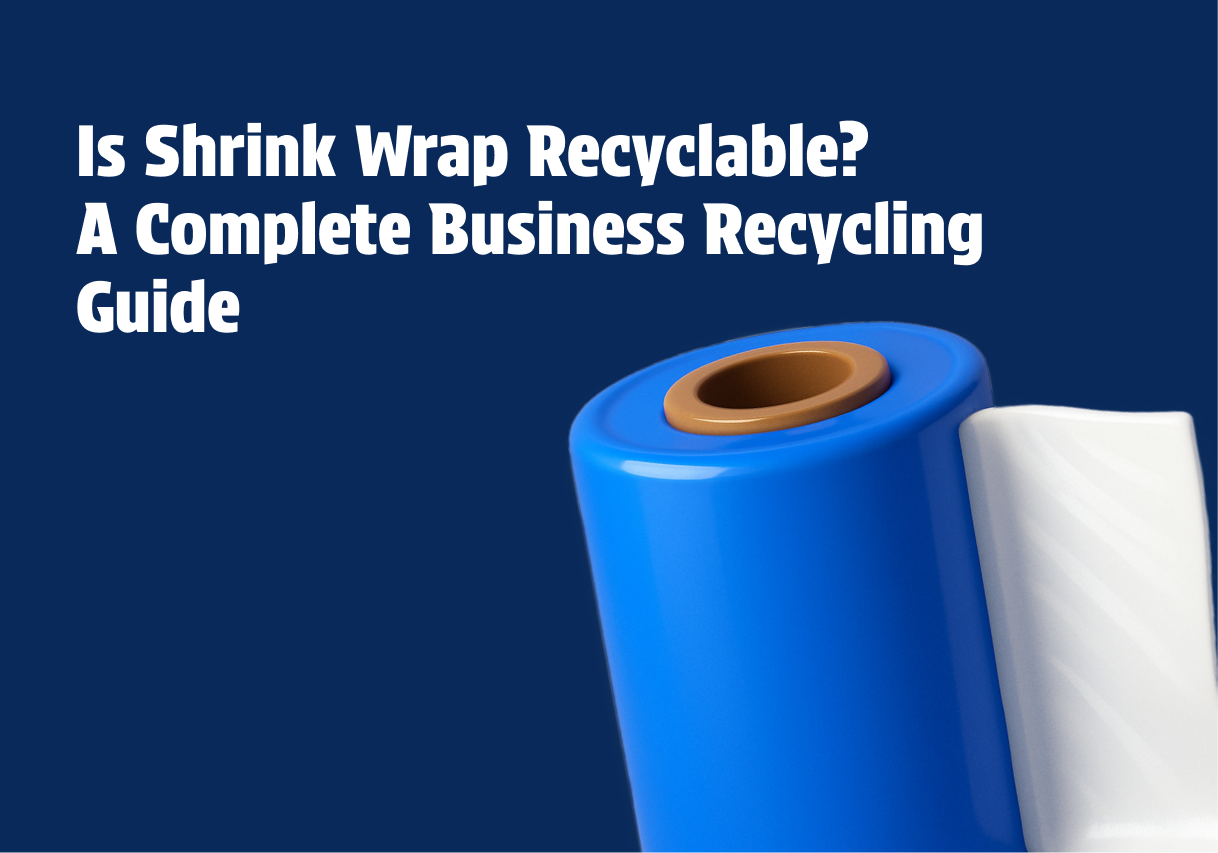Walk through any warehouse, distribution center, or retail backroom, and you’ll see shrink wrap everywhere. It’s one of the most widely used packaging materials because it protects goods in transit, keeps pallets stable, and makes distribution more efficient.
But with sustainability becoming a top priority, many businesses are now asking: Is shrink wrap recyclable? The good news is, yes—shrink wrap can be recycled under the right conditions. The challenge lies in knowing how to collect, prepare, and process it correctly.
In this guide, we’ll explore how shrink wrap recycling works, the common barriers businesses face, and the practical steps you can take to reduce waste, save money, and improve sustainability across your operations.
TL;DR (Key Takeaways)
- Yes, shrink wrap is recyclable—but it requires proper collection, separation, and preparation (like baling).
- Recycling shrink wrap can save businesses money on disposal costs and even generate revenue through resale.
- Baling machines make large-scale shrink wrap recycling efficient by reducing volume and handling costs.
- Implementing shrink wrap recycling helps companies hit sustainability targets while lowering environmental impact.
- The right strategy combines thinner gauge films, recycling partnerships, and in-house programs for maximum ROI.
What Is Shrink Wrap and How Is It Used in Business Packaging
Shrink wrap is a thin, flexible plastic film—most often made from low-density polyethylene (LDPE, recycling code #4). When heat is applied, the film shrinks tightly around products or palletized loads, creating a secure seal.
Common uses of shrink wrap in business include:
- Securing pallet loads for transport.
- Protecting goods from dust, dirt, and moisture.
- Bundling retail products together.
- Adding tamper-resistance for sensitive items.
It’s also worth noting that shrink wrap is different from stretch film.
- Shrink wrap requires heat to conform tightly around goods.
- Stretch film is mechanically wrapped around loads and relies on stretch tension for containment.
Because shrink wrap is so versatile and cost-effective, it has become nearly universal in logistics and packaging. However, this same ubiquity raises questions about its environmental footprint, particularly since it’s perceived as a single-use plastic.
Related Reading: If you’re evaluating which film is best for your operation, check out our Shrink Wrap Guide.
Is Shrink Wrap Recyclable? The Short Answer
The direct answer is yes—shrink wrap is recyclable. Most shrink films are made of LDPE #4 plastic, which is widely accepted in plastic recycling streams.
So why does confusion exist?
- Many recycling programs focus on hard plastics (bottles, containers) and don’t always advertise their acceptance of soft plastics like shrink film.
- Contamination issues—such as dirt, tape, and food residue—make it harder for recycling facilities to process shrink wrap.
- Local infrastructure varies, meaning not every waste hauler or recycling facility can handle shrink wrap in bulk.
The key takeaway: Shrink wrap recycling is possible—but only if businesses take steps to keep it clean, collect it separately, and work with the right partners.
Challenges of Shrink Wrap Recycling for Businesses
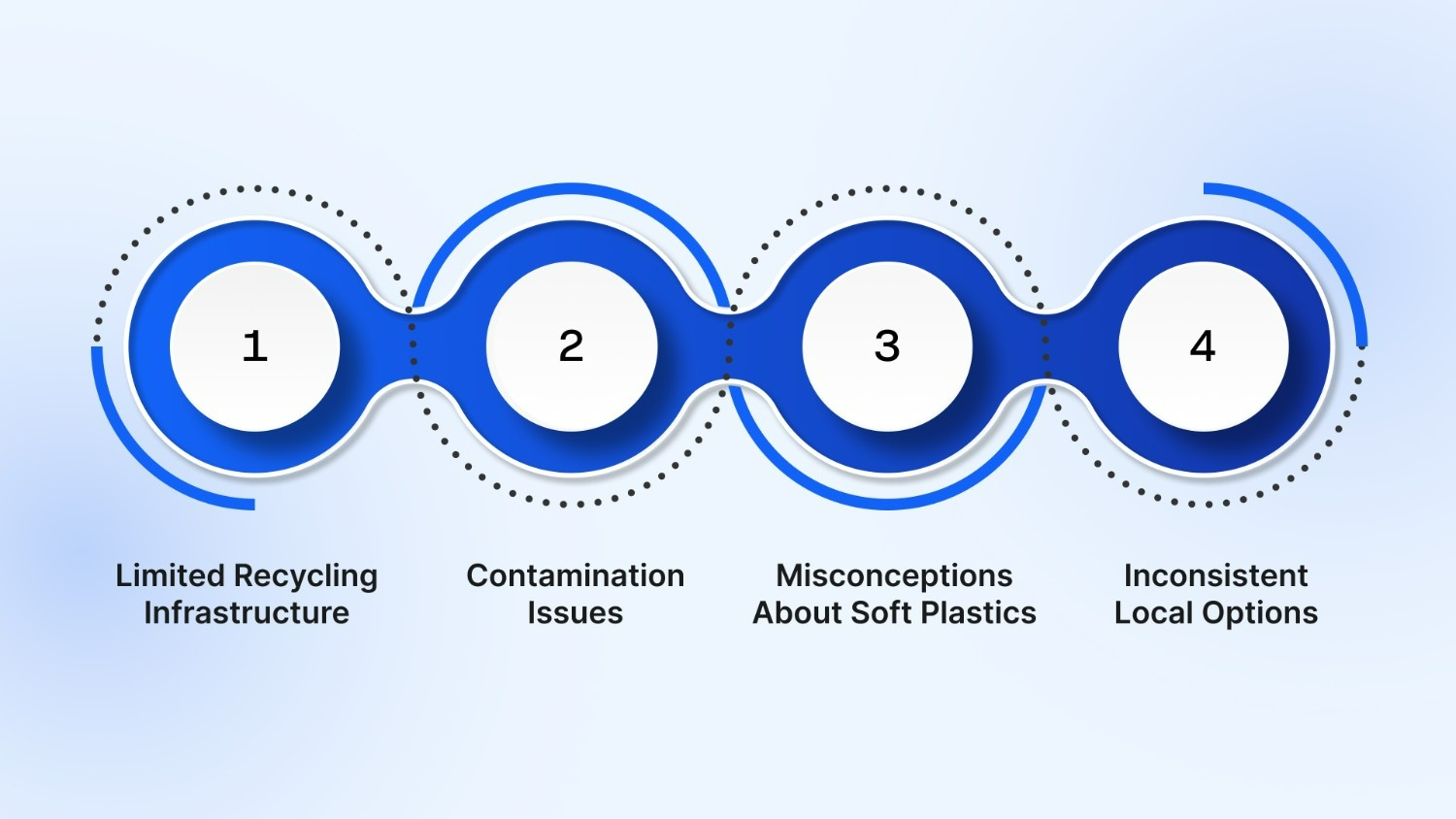
Even though shrink wrap is technically recyclable, many businesses still struggle to implement effective recycling programs. The biggest barriers usually fall into three categories:
1. Limited Recycling Infrastructure
Unlike cardboard or aluminum, soft plastics require specialized equipment to process. Many municipal recycling centers are not set up to handle shrink wrap because it can tangle in machinery. That means companies often need to work directly with specialized recycling providers or plastic film collection programs.
2. Contamination Issues
Shrink wrap that’s mixed with labels, packing tape, dirt, or food waste becomes much harder to recycle. Even small contaminants can render an entire bale of plastic unusable. For recycling to be successful, shrink wrap must be:
- Collected separately from other waste streams.
- Kept clean and dry.
- Free of excessive tape or labels.
3. Misconceptions About Soft Plastics
There’s a common myth that all “single-use plastics” are non-recyclable. While this is true for some materials, LDPE shrink film has strong recycling potential—but only when businesses manage it properly.
4. Inconsistent Local Options
A company in one city may have access to multiple shrink wrap recycling services, while another just miles away may find it nearly impossible. This inconsistency often leaves businesses confused about what’s recyclable in their area.
Solutions for Effective Shrink Wrap Recycling
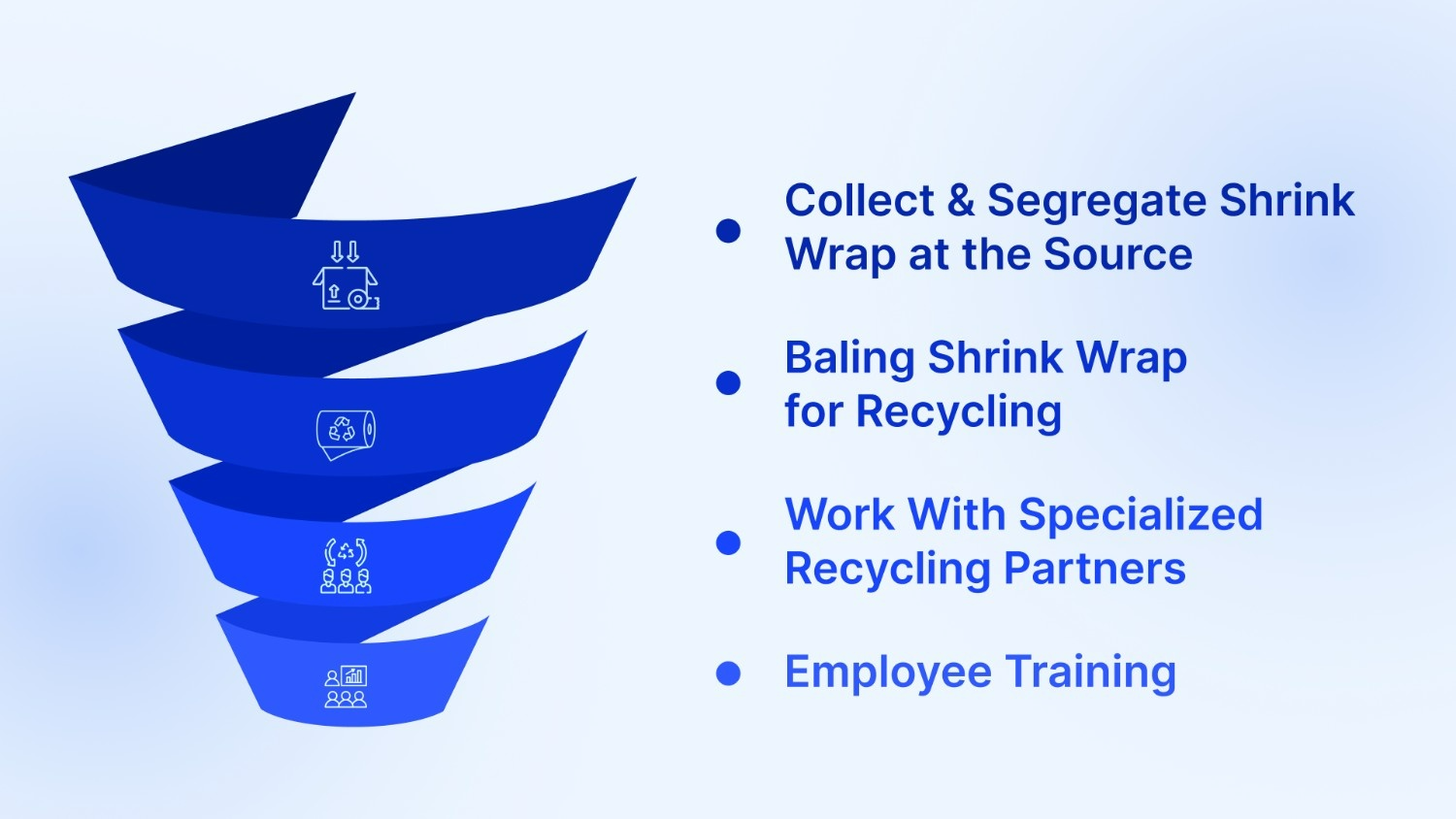
To overcome these challenges, businesses can implement structured recycling practices that make shrink wrap easier to process.
1. Collect and Segregate Shrink Wrap at the Source
Keep shrink wrap separate from general trash and recycling. Establish clearly marked collection bins in areas where pallets are unwrapped or products are unpackaged.
2. Baling Shrink Wrap for Recycling
For warehouses or distribution centers generating high volumes, a baling machine is one of the most efficient tools. Baled shrink wrap:
- Reduces storage space.
- Cuts down transportation costs.
- Makes it easier for recycling companies to accept large volumes.
3. Work With Specialized Recycling Partners
Many waste management providers and packaging suppliers (like John Maye Company’s partners) offer tailored shrink wrap recycling solutions. Partnering with these providers ensures that the film is handled correctly and doesn’t end up in landfill.
4. Employee Training
Recycling programs only work when staff are properly trained. Employees should know:
- Where to collect shrink wrap.
- How to remove contaminants like tape.
- Why recycling matters to the business’s sustainability goals.
Related Reading: See how businesses are improving efficiency across packaging operations in our post on Improving Packaging Efficiency and Productivity.
Economic and Environmental Benefits of Shrink Wrap Recycling

Recycling shrink wrap isn’t just about doing the right thing for the planet—it also makes business sense. By treating shrink wrap as a resource instead of waste, companies can unlock multiple advantages.
1. Cost Savings From High-Volume Recycling
For warehouses, distribution centers, and manufacturers, shrink wrap often makes up a large portion of total packaging waste. Instead of paying to haul it to landfills, baled film can often be collected by recycling companies at a reduced cost—or even sold as a recyclable material. Over time, these savings add up significantly.
2. Reduced Environmental Impact
Shrink wrap, made from low-density polyethylene (LDPE), has a lower carbon footprint compared to some alternatives like glass or metal packaging. When recycled properly, it reduces demand for virgin plastics and keeps thousands of pounds of soft plastic waste out of landfills.
3. Meeting Sustainability Goals
Many companies today are setting ESG (Environmental, Social, Governance) and sustainability targets. Recycling shrink wrap is a tangible, measurable step that:
- Reduces waste-to-landfill metrics.
- Improves reporting for sustainability audits.
- Strengthens brand reputation as an environmentally responsible business.
4. Space Optimization in Facilities
Accumulated plastic film can take up valuable space in warehouses. By baling and recycling it regularly, businesses keep operations tidy and more efficient, freeing up room for core operations.
Related Reading: Learn how stretch wrap gauge selection can reduce costs and material waste in our post on Choosing the Right Stretch Wrap Gauge.
Programs and Recommendations for Businesses
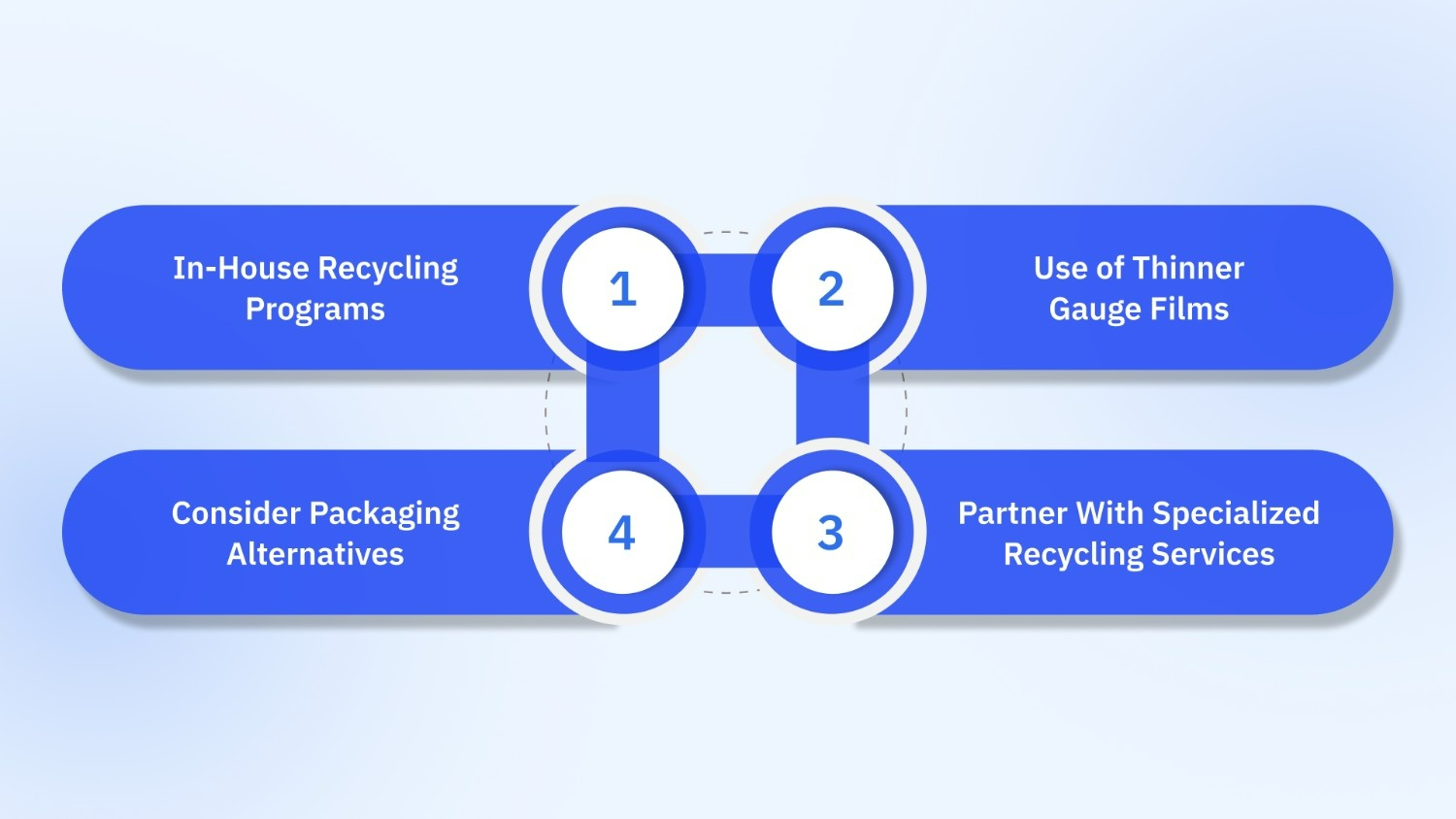
To make shrink wrap recycling truly effective, businesses should adopt structured programs and smarter packaging strategies.
1. In-House Recycling Programs
Companies can set up their own internal collection and baling systems for shrink wrap. With the right processes, staff can quickly separate plastic film and prepare it for pickup.
2. Use of Thinner Gauge Films
Technology advancements now allow for thinner, stronger shrink wrap films that use less material without sacrificing load security. This reduces overall plastic consumption while still maintaining performance.
3. Partner With Specialized Recycling Services
For many organizations, success comes from partnering with companies that offer plastic film recycling solutions—from collection to processing.
4. Consider Packaging Alternatives
In certain scenarios, businesses may explore switching from shrink wrap to other packaging methods like pallet wrapping equipment, which can use stretch film more efficiently while still keeping loads secure.
Related Reading: Curious about pallet handling? Check out our guide to Pallet Jack Lift Height.
The Role of Baling Machines in Shrink Wrap Recycling
One of the biggest challenges with shrink wrap recycling is its bulky, lightweight nature. Loose plastic film takes up significant space and is difficult to transport efficiently. This is where baling machines come in.
1. How Baling Machines Help
Baling machines compress shrink wrap into dense, uniform bales. This not only saves space but also makes it easier for recyclers to handle and transport. For businesses generating large amounts of shrink film waste, balers can quickly become a game-changer.
2. Cost-Benefit for Large Operations
While smaller facilities may manage recycling through collection bins and external pickup, larger warehouses and distribution centers can significantly reduce logistics costs by investing in balers. The ability to bale in-house:
- Lowers collection frequency and hauling costs.
- Allows businesses to potentially sell baled shrink wrap to recycling markets.
- Improves operational efficiency by keeping work areas uncluttered.
3. Scalability and ROI
For companies handling thousands of pallets a month, balers often pay for themselves within a few years through landfill cost reduction, improved sustainability reporting, and space savings.
Related Reading: See how improving efficiency across your facility can deliver long-term savings in our post on Packaging Machine Maintenance Tips.
How John Maye Company Supports Smarter Packaging & Logistics
When it comes to shrink wrap recycling and overall packaging efficiency, John Maye Company goes beyond supplying materials — we provide end-to-end solutions:
- Packaging Equipment → From pallet wrapping machines to shrink wrap systems, we ensure your loads are wrapped securely and consistently while reducing film waste.
- Conveyors & Material Handling → Our range of belt and roller conveyors improve warehouse efficiency and reduces manual handling risks.
- Supplies & Consumables → We provide reliable stretch films, tapes, and packaging supplies that balance performance with sustainability.
- Service & Leasing Options → With equipment servicing and flexible leasing programs, you don’t just get equipment — you get long-term reliability and scalability.
- Expert Consultation → Our team helps you design packaging strategies that improve sustainability, cut costs, and meet compliance standards.
Conclusion
So, is shrink wrap recyclable? Yes—absolutely. While there are challenges, businesses that set up proper recycling programs, invest in the right equipment, and partner with recycling services can turn shrink wrap waste into an opportunity.
By recycling shrink wrap, companies can:
- Reduce waste disposal costs.
- Free up space in warehouses.
- Strengthen sustainability initiatives.
- Minimize environmental impact.
Shrink wrap recycling may require some upfront effort, but the long-term economic and ecological benefits make it a smart strategy for any forward-thinking business.
For companies looking to improve their packaging processes and sustainability goals, exploring the right pallet wrapping equipment, thinner gauge films, and in-house recycling solutions can make all the difference.
At John Maye Company, we don’t just supply shrink wrap equipment and pallet wrapping solutions — we help businesses design smarter, more efficient packaging strategies. Whether you need supplies, equipment leasing, or servicing support, our team is here to help.
Contact us today to explore how your business can streamline packaging while hitting sustainability goals.
Frequently Asked Questions (FAQs) About Shrink Wrap Recycling
1. What role does John Maye Company play in shrink wrap recycling?
John Maye Company provides:
- Shrink wrap machines that optimize film usage and reduce waste.
- Packaging supplies with recyclable and eco-friendly options.
- Consultation services to design recycling programs that fit business needs.
2. Can shrink wrap go in the same bin as other plastics?
No. Shrink wrap should not be mixed with rigid plastics like bottles or containers, as it can jam sorting equipment. Instead, it should be baled or bundled separately for recycling.
3. What types of shrink wrap are most recyclable?
Most LDPE shrink films are recyclable. However, shrink wrap with heavy printing, lamination, or contamination (like food residue) is harder to recycle and may be rejected by facilities.
4. How can businesses recycle shrink wrap efficiently?
Businesses can:
- Collect shrink wrap in bulk and bale it using a baling machine.
- Partner with a shrink wrap recycling service provider.
- Train staff to keep shrink film clean and separate from general waste.
5. Is recycled shrink wrap reused in packaging again?
Yes. Recycled LDPE shrink film can be turned into new plastic bags, construction films, composite lumber, or recycled shrink wrap rolls — closing the loop on packaging sustainability.
6. What are the benefits of recycling shrink wrap for businesses?
- Cost savings: Reduces disposal fees and may generate revenue when sold in bulk.
- Sustainability goals: Helps companies reduce their carbon footprint.
Compliance: Meets corporate or regulatory waste reduction requirements.
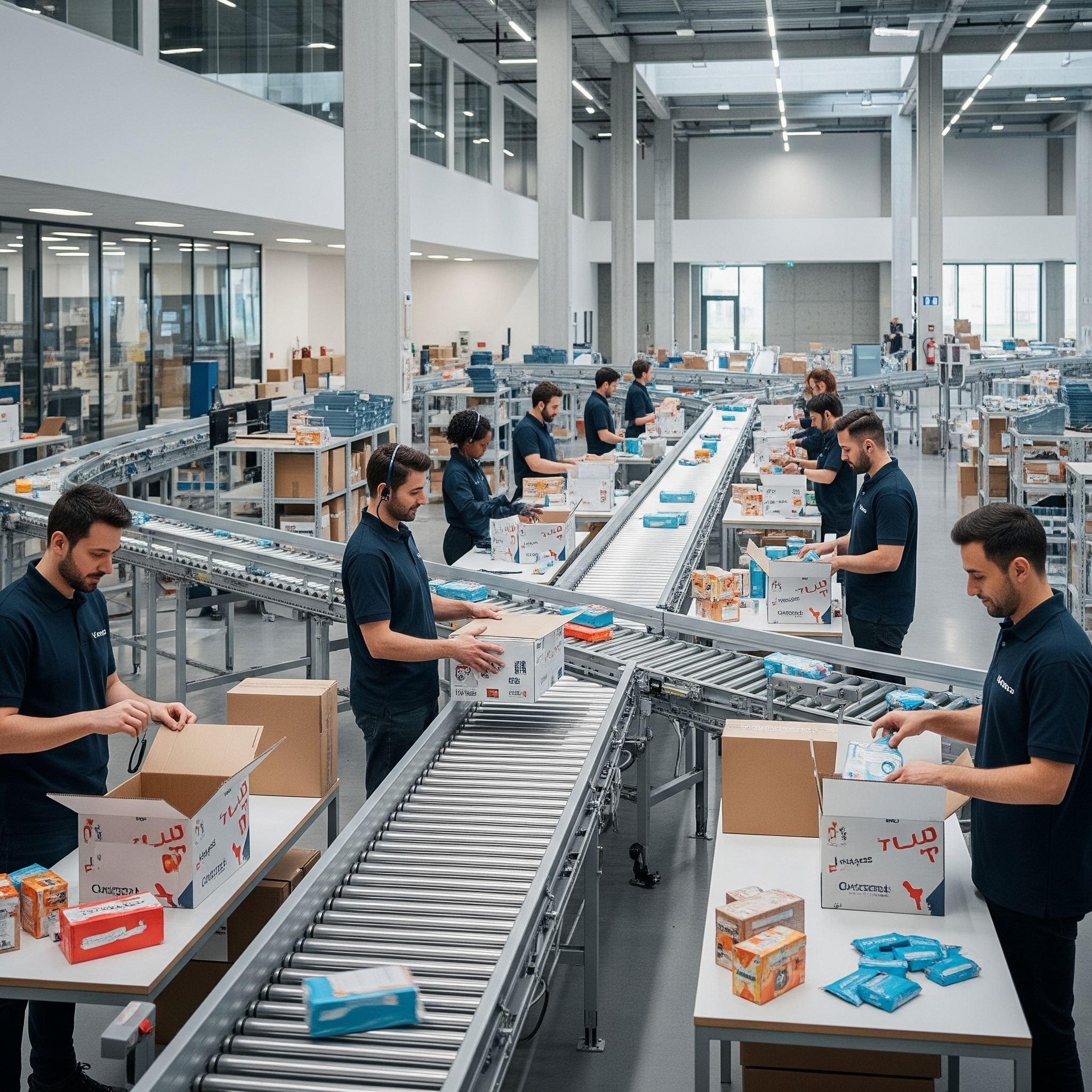
Blogs

Best Benefits of Renting Packaging Equipment vs. Buying Equipment
Discover the best benefits of renting packaging equipment vs. buying. Enjoy flexibility, reduced risks, and access to new tech. Click to see more!
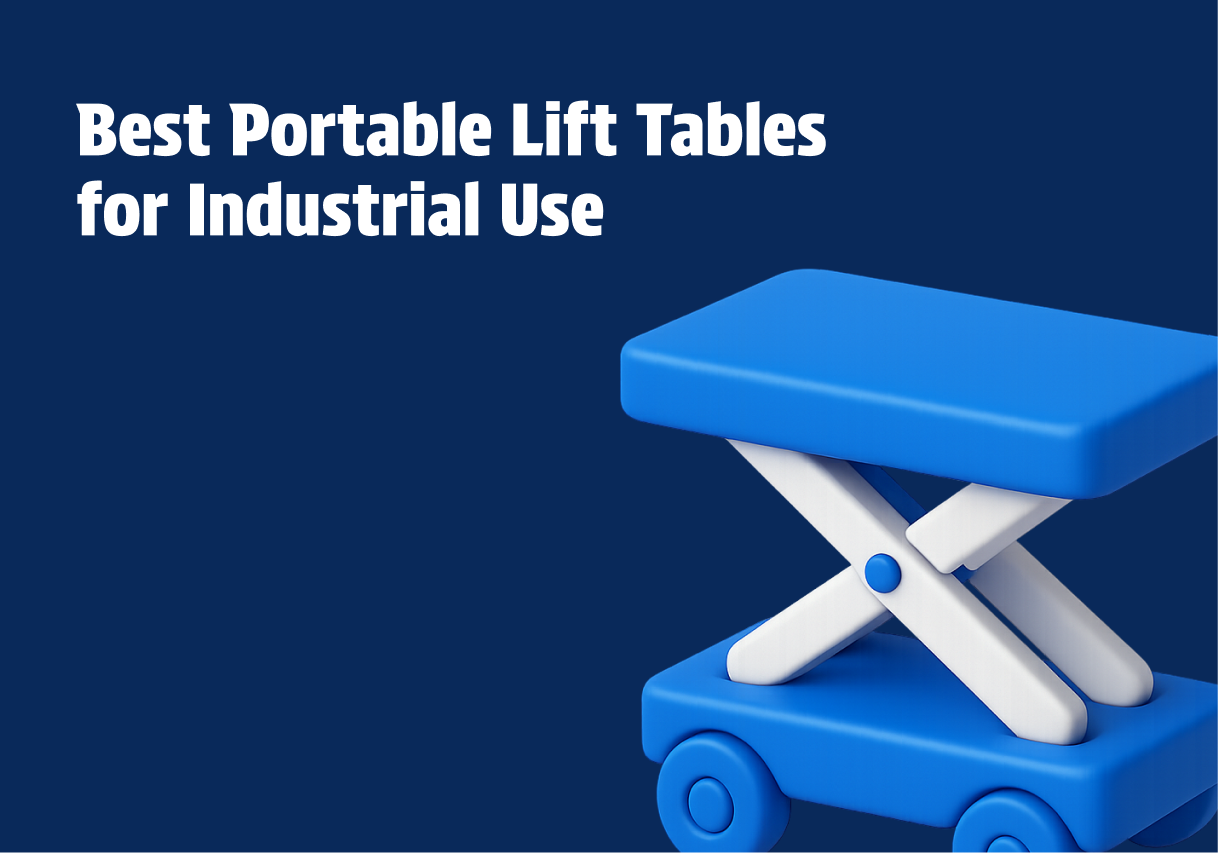
Best Portable Lift Tables for Industrial Use
Explore the best portable lift tables for small operations. Discover ergonomic benefits, compact design, and efficiency. Boost safety and performance now!

Standard Pallet Loading Height and Dimensions Guide
Learn pallet loading height standards to prevent load collapse, cut downtime, and keep your industrial packaging operations running efficiently.
